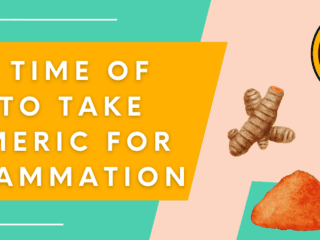Need help with your standard diet plan? Following the glycemic index (GI) may show you how the food you eat affects your blood sugar level and overall health. Eating low glycemic index foods may help you curb blood sugar levels and the effects of diabetes.
So in this article, we will provide you with a comprehensive list of low-GI foods and a daily meal plan for incorporating them into your diet with fantastic recipes.
Key Takeaways
– The purpose of a low-GI diet is to help choose foods less likely to spike one’s blood sugar levels.
– Low-GI foods include vegetables, fruits, dairy products, shellfish, seeds, and nuts.
– Low-GI foods can help yield important health benefits like reducing the risk of cancers and cardiovascular problems.
– Low-GI foods may not always be healthy, so it’s best to consider a certain food’s overall nutritional value first rather than solely basing it on its GI value alone.
What Is A Low Glycemic Index?
A low-glycemic index (low-GI) diet is an eating plan based on foods containing carbohydrates and their potential to affect blood sugar levels (also called blood glucose). This diet uses the glycemic index as the main guide for meal planning.
Who Benefits From A Low Glycemic Diet?
People seeking to manage their blood sugar levels, such as those with diabetes or pre-diabetes, or those who want to maintain a healthy diet. They may also use the glycemic index as one of many tools for making choices about foods and meals.
Diet Details – How it Works
If you follow a low-GI diet, your foods with carbs are mostly limited to choices with low values.
The glycemic index ranks food on a scale from 0 to 100. The low end of the scale has foods that have little effect on blood sugar levels. The high end of the scale has foods with a big effect on blood sugar levels. Naturally, it’s advisable to avoid foods with high values.
Examples of foods with low, middle, and high GI levels are:
- Low GI – Must have an index of 0 – 55. Examples include certain vegetables, fruits, whole grain foods, and others.
- Medium GI – Foods with a GI index of 56 – 69. This classification includes sweet corn, bananas, raw pineapple, raisins, cherries, oat breakfast cereals, and multigrain, whole-grain wheat or rye bread.
- High GI – Foods with an index of 70 – 100. These include White rice, white bread, and potatoes.
This classification is based on how carbs react in the body. For example, the sugars in soda and sweet desserts (known as simple carbohydrates) tend to be broken down faster than complex carbohydrates (which are found in some vegetables and whole-grain food), which causes blood sugar levels to spike and then drop rapidly.
Our List of Low Glycemic Foods
Some common low-glycemic foods are as follows (with their corresponding GI index values):
Vegetables
| Food | GI Index Value |
|---|---|
| Artichokes | 20 |
| Bok choy | 1 |
| Broccoli | 15 |
| Brussels sprouts | 15 |
| Cabbage | 10 |
| Carrots | 35 – raw 33 – boiled |
| Cauliflower | 10 |
| Celery | 35 |
| Crookneck squash | 15 |
| Cucumbers | 15 |
| Eggplant | 15 |
| Green beans | 32.2 |
| Green peas | 32 |
| Leafy greens (e.g., spinach, collards, kale, beet etc.) | 15 (average) |
| Lettuce | 15 |
| Mushrooms | 10 |
| Onions | 10 |
| Peppers (including bell peppers and jalapenos) | 15 |
| Snow peas | 30 |
| Tomatoes | 15 |
| Zucchini | 15 |
Fruits
| Food | GI Index Value |
|---|---|
| Apples | 36 |
| Avocado | 15 |
| Blueberries | 53 |
| Cherries | 22 |
| Coconut | 42 |
| Cranberries | 42 |
| Dried apricots | 34 |
| Grapefruit | 25 |
| Olives | 15 |
| Oranges | 40 |
| Peaches | 42 |
| Pears | 38 |
| Plum | 40 |
| Strawberries | 41 |
| Unripe green bananas | 30 |
Whole or Minimally Processed Grains
| Food | GI Index Value |
|---|---|
| Barley | 28 |
| Oat bran and rice bran cereals | 15 |
| Sourdough bread | 50 |
| Wheat tortilla | 30 |
| Whole wheat | 45 |
| Whole-grain pasta | 40 |
| Whole-grain pumpernickel bread | 50 |
Dairy & Dairy Substitute Products
| Food | GI Index Value |
|---|---|
| Cheese | 0-10 |
| Cottage cheese | 0.6 |
| Milk | 27 |
| Plain yogurt | 14 |
| Soy milk | 44 |
Seafood
| Food | GI Index Value |
|---|---|
| Fish (e.g., salmon, trout, tuna, sardines) | 0 |
| Shellfish (e.g., shrimp, lobster, crab, spiny lobster, etc.) | 5 |
Meats
| Food | GI Index Value |
|---|---|
| Beef | 0 |
| Pork | 0 |
| Poultry (chicken and turkey) | 0 |
Miscellaneous
| Food | GI Index Value |
|---|---|
| Eggs (and egg whites) | 0 |
| Fats (lard and butter) | Lard – 0 Butter -50 |
| Mayonnaise | 0.2 |
| Nuts (including nut butter) | Most nuts don’t have GI, with the exception of cashews (15) chestnuts (54), peanuts (15), and pistachios (28), |
| Oils (extra virgin olive oil and canola oil) | 0 |
| Seeds (e.g., pumpkin, chia, sunflower, flax) | Chia – 30 Flax – 35 Pumpkin – 25 Sunflower – 35 |
Foods with a low GI index are digested and absorbed slower by the body, causing a slower and smaller rise in blood sugar levels. Those with a high GI index tend to be digested and absorbed faster, ending in a rapid spike and drop in blood sugar levels.
Benefits Of A Low-Glycemic Index Diet
According to endocrinologist Alexander Williams, following a low glycemic index diet can improve one’s overall health and help lessen the risk of certain illnesses, such as type 2 diabetes.
Given that people with diabetes are unable to process sugars effectively, they are unable to maintain healthy blood sugar levels. However, a low glycemic index diet can help control blood sugar levels and help prevent and delay the onset of complications, such as heart disease, stroke, and damage to the nerves and kidneys.
Other important health benefits include:
- Improved cholesterol levels – Various studies show that a low GI diet helps improve cholesterol levels. One study found that low-GI diets showed a significant effect on decreasing total cholesterol and low-density lipoprotein (LDL) cholesterol over a 5-12 week time frame. (LDL is an important factor in the increased risk of heart disease and stroke)
- Promotes weight loss – Since low-GI diets help you make better food choices and meal plans, it may help you track what you eat, manage your weight, and help promote weight loss. However, further research is needed to determine whether low GI diets are effective for long-term weight loss.
- Reduces the risk of cancers – Aside from weight loss, studies also show that low GI foods lower the glycemic and insulinemic potential of the diet and have been shown to reduce the risk of several cancers, such as diabetes-related cancers (particularly basal cell carcinoma), endometrial, colorectal, and breast cancer. Evidence also suggests they are also associated with a lower recurrence.
- Reduces the risk of cardiovascular disease – Studies show that high GI and GL diets with an increased risk of heart disease. And since low-glycemic foods help you lose weight and reduce your cholesterol levels, these benefit the heart significantly and reduce the chances of heart-related problems.
- Alleviates mental health problems – One study showed that consuming a high glycemic diet increased the occurrence of depression and that a higher consumption of lactose, fiber, non-juice fruit, and vegetables was significantly associated with lower odds of incidence.
Potential Drawbacks
While using the glycemic index is a good place to start choosing foods; there are a few downsides. One factor that affects the glycemic index is the rating is only valid for individual foods, which means if the food is paired with a food rich in protein or fat, it can affect the GI ranking.
The ripening of food also affects their respective glycemic indexes. For example, a banana’s GI depends on how ripe it is â an underripe banana may have a GI of 30-42, while riper bananas may have a GI of 47-62.
Another drawback of the glycemic index is that the glycemic response to a particular food may vary between individuals. The effects may vary throughout different points in the day and even daily.
The GI does not consider other bodily responses, such as the insulin response. The insulin response to a meal can be measured separately using the insulin index.
The GI doesn’t always reflect the healthiness of certain foods and says nothing about their nutritional information. Snacks like [certain types of] brownies, chocolate bars, cookies, ice creams, and cakes may have low GIs but are otherwise unhealthy and bad for nutrition. Meat dishes like pork skins, bacon, and other processed/cured meats also have a low GI rank; however, they have no nutritional value.
The GI value of any food item depends on how the food is prepared and processed. Food processing methods also affect glycemic indexes. One study showed that roasted and baked foods contained a significantly higher GI value than boiled and fried foods. On the other hand, fried foods containing a high amount of fat slows down sugar absorption in the bloodstream and decrease the GI, though it’s still discouraged since they can lead to weight gain and dyslipidemia.
Overall, researchers and nutritionists believe that the benefit of the low glycemic diet may be more linked to the food’s nutritional profile rather than its GI value. But while the glycemic diet is an important factor, one should consider the food or diet’s overall nutritional quality first rather than solely focusing on the GI value.
How To Incorporate Low-GI Foods Into Meals & Recipes
Now that we’ve identified low-GI foods, incorporating them into your daily meals is the next step. If you’re looking for a guide, check out this sample meal plan for each day of the week here.
Sunday
Breakfast: Oatmeal (rolled oats), milk, chia seeds with berries.
Lunch: Crispy salmon aglio olio pasta (with whole-grain pasta and olive oil), with a low-fat fruit yogurt for dessert
Dinner: Spanish chicken with tomatoes (and tomato puree), onions, and yellow pepper
Monday
Breakfast: Buckwheat pancakes
Lunch: Beef stir-fry with vegetables (eaten with long grain rice)
Dinner: Chicken pumpkin and quinoa soup
Tuesday
Breakfast: Whole-grain toast with cottage cheese
Lunch: Crispy pork chops with creamy-garlic sauce
Dinner: Sautéed sardines (in garlic and onion)
Wednesday
Breakfast: Tuna omelet with mushrooms, spinach, tomato, and cheddar cheese
Lunch: Butter-cooked garlic chorizo fried rice with carrots
Dinner: Chicken adobo stew (made with soy sauce) and toasted garlic bits
Thursday
Breakfast: Feta cheese and corned beef sandwich (with whole grain bread)
Lunch: Meatballs in tomato sauce
Dinner: Grilled milkfish served with green beans
Friday
Breakfast: Anchovies and quinoa bowl topped with a sunny-side-up egg.
Lunch: Chickpea stew
Dinner: Sourdough margherita pizza
Saturday
Breakfast: Breakfast burrito made of wheat tortilla, ground beef, cherry tomatoes, onions, and lime juice
Lunch: Homemade beef burger patty steak with mushroom sauce
Dinner: Boiled mussel stew paired with frontiére rice
Key Takeaways
- The glycemic index is used to classify foods that contain carbohydrates, their potential for affecting blood sugar, and how quickly they raise your blood sugar.
- The purpose of a low-GI diet is to help choose foods less likely to spike one’s blood sugar levels.
- Low-GI foods include vegetables, fruits, dairy products, shellfish, seeds, and nuts.
- Low-GI foods can help yield important health benefits like reducing the risk of cancers and cardiovascular problems.
- Low-GI foods may not always be healthy, so it’s best to consider a certain food’s overall nutritional value first rather than solely basing it on its GI value alone.
Conclusion
The glycemic index is a useful guide to help you make better, healthier food choices, and following a low-GI diet may help you lose weight (or keep a healthy weight) and may even significantly cut your risk of diabetes and cardiovascular diseases.
However, the low GI index has a few drawbacks, such as not being able to define a food item’s nutritional profile and being valid only for individual foods, but preparing a low-GI meal plan can keep one on track. It’s also best to base mainly your food options based on their overall nutritional profile rather than looking solely at their GI index.
Before making drastic changes to your diet, consider consulting with a trusted healthcare professional or dietitian to help you weigh options and have them guide you with diet tips best suited to your health needs.
Disclaimer: this article does not constitute or replace medical advice. If you have an emergency or a serious medical question, please contact a medical professional or call 911 immediately. To see our full medical disclaimer, visit our Terms of Use page.










